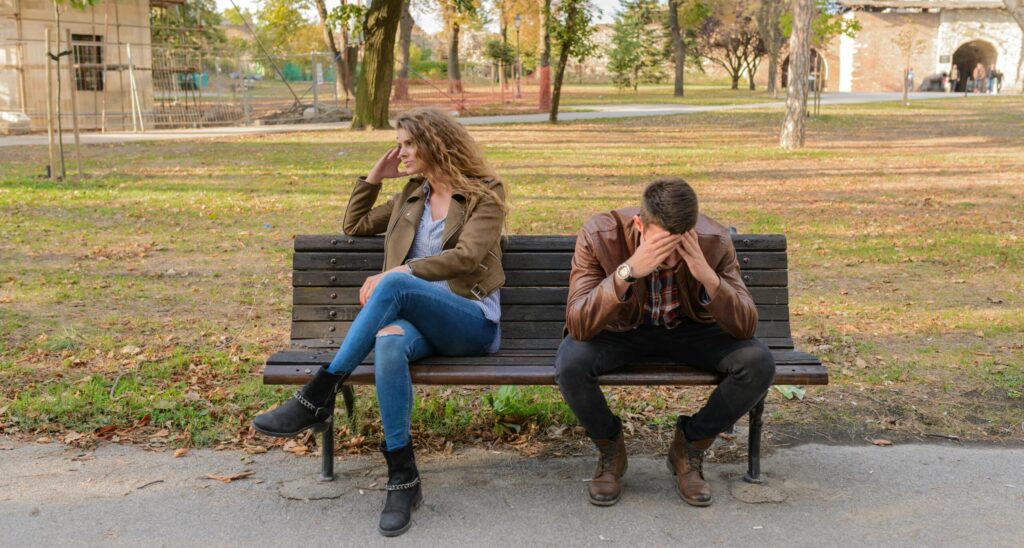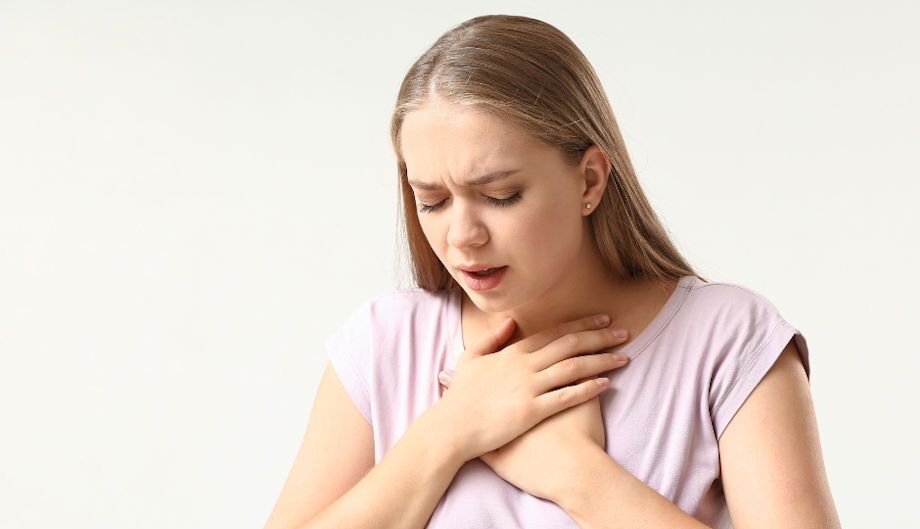Most Americans use “anxiety” to describe anything from butterflies before a presentation to a full-blown panic attack. But clinically, anxiety has a more specific meaning. It’s not just worry, it’s persistent, excessive fear or nervousness that interferes with daily life.
1. Everyday Anxiety vs. Anxiety Disorder
- Everyday anxiety: Short-term, linked to a situation (job interview, exam, first date). It fades when the stressor is over.
- Anxiety disorder: Out of proportion, hard to control, and sticks around, even when life is calm. It often leads to avoidance (skipping work, social events, travel).
2. What It Feels Like in the Body
Anxiety isn’t “just in your head.” It’s your body’s fight-or-flight system stuck on overdrive. Common physical signs include:
- Racing heart or palpitations
- Sweaty palms or hot flashes
- Shortness of breath or chest tightness
- Stomachaches, nausea, or diarrhea
- Muscle tension, trembling, or feeling keyed-up
- Insomnia or restless sleep
Translation: your brain is signaling danger, even when there isn’t any real threat.
3. What It Feels Like in the Mind
- Constant worry or dread (“what if” thoughts)
- Irritability or feeling on edge
- Difficulty concentrating
- Feeling disconnected, like you’re watching life from outside your body
- In panic attacks: sudden fear, feeling like you’re choking, or fear of dying
4. Common Types of Anxiety Disorders
- Generalized Anxiety Disorder (GAD): Ongoing, uncontrollable worry about many areas of life.
- Panic Disorder: Recurrent panic attacks, sudden, intense surges of fear.
- Social Anxiety Disorder: Intense fear of embarrassment or judgment in social settings.
- Phobias: Extreme fear of specific things (flying, spiders, heights).
- Separation Anxiety (not just kids): Worry about being apart from loved ones.
- Health Anxiety: Preoccupation with having a serious illness despite reassurance.
5. Why Anxiety Happens
- Genetics (runs in families)
- Brain chemistry (overactive amygdala, serotonin/GABA imbalances)
- Personality traits (perfectionism, high sensitivity)
- Trauma or chronic stress
- Medical conditions (thyroid, heart issues) or stimulant use (caffeine, drugs)
6. When to Seek Help
If anxiety is:
- Daily or near-daily
- Stopping you from work, school, or relationships
- Accompanied by panic attacks, avoidance, or physical illness
-> It’s time to reach out. Effective treatments (therapy, medication, lifestyle) exist and work for millions of Americans.
In Short:
Anxiety is your brain’s alarm system, but in disorders, it’s ringing when there’s no fire. It shows up in the body, the mind, and in daily behavior, making life feel smaller. But it’s also one of the most treatable mental health conditions once recognized.
Ayurveda’s Perspective on Anxiety
Ayurveda doesn’t use the word “anxiety,” but it describes the condition we recognize as anxiety in terms of dosha imbalance, weak digestion (Agni), depleted vitality (Ojas), and disturbed mental qualities (Gunas).
The central culprit is almost always Vata dosha—the energy of air and space, which governs movement, the nervous system, and thought flow. When Vata goes out of balance, the mind feels scattered, unstable, and restless – classic anxiety.
1. Dosha-Based View of Anxiety
- Vata-type Anxiety (most common):
- Mind/Body: racing thoughts, worry loops, restlessness, dry mouth, constipation, difficulty sleeping.
- Triggers: irregular routine, travel, overstimulation, excessive screen time, fasting/skipping meals.
- Mind/Body: racing thoughts, worry loops, restlessness, dry mouth, constipation, difficulty sleeping.
- Pitta-type Anxiety (fire element mixed in):
- Mind/Body: irritability, anger + anxiety, heartburn, sweating, perfectionistic overdrive.
- Triggers: overwork, competition, excess heat, too much coffee or spicy food.
- Mind/Body: irritability, anger + anxiety, heartburn, sweating, perfectionistic overdrive.
- Kapha-type Anxiety (least common, but possible):
- Mind/Body: heaviness, emotional withdrawal, foggy worry, sluggish digestion.
- Triggers: sedentary lifestyle, overeating sweets, oversleeping, isolation.
- Mind/Body: heaviness, emotional withdrawal, foggy worry, sluggish digestion.
Even though Vata dominates, Pitta and Kapha can color how anxiety looks and feels.
2. Agni, Ama, and Ojas Connection
- Agni (digestive fire): When weak or irregular, it creates Ama (toxic buildup). Ama blocks mental clarity and destabilizes mood.
- Ojas (vital resilience): Anxiety depletes Ojas—the subtle energy that gives you steadiness and immunity. Low Ojas is equivalent to fatigue, low tolerance for stress, easily shaken by worry.
- Cycle: Weak Agni > Ama buildup > Ojas depletion > nervous system imbalance > anxiety.
3. Gunas (Mental Qualities)
The mind has three qualities:
- Sattva (clarity, calmness) leads to balanced state.
- Rajas (activity, restlessness) leads to overdrive, constant movement of thoughts.
- Tamas (inertia, heaviness) leads to fog, avoidance, withdrawal.
Anxiety is dominated by Rajas (overactivity), often with weakened Sattva. If anxiety persists, it can eventually pull in Tamas, leading to fatigue and depression.
4. Ayurvedic Signs of Anxiety (beyond the obvious)
- Cold hands/feet, dry skin (Vata out of balance).
- Craving crunchy/salty snacks (Vata imbalance seeking grounding).
- Late-night second wind (trouble sleeping before midnight).
- Irregular appetite: hungry one day, no hunger the next.
- Feeling ungrounded, disconnected, or “up in the air.”
5. Ayurvedic Approaches to Balance Anxiety
Dinacharya (Daily Routine)
- Wake up at the same time every day, ideally before sunrise.
- Regular meals at set times, no skipping.
- Bedtime by 10 PM to calm Vata and restore balance.
Diet
- Favor warm, moist, grounding foods (soups, stews, ghee, root veggies).
- Avoid excess caffeine, alcohol, dry/cold foods, and processed snacks.
- Drink warm herbal teas (cumin, coriander, fennel).
Herbs
- Ashwagandha: calms stress hormones, builds resilience.
- Brahmi (Bacopa): improves clarity and focus.
- Jatamansi: deeply calming, supports sleep.
- Tulsi (Holy Basil): reduces stress and balances energy.
Mind-Body Practices
- Yoga: grounding poses like child’s pose, forward bends, gentle flows.
- Pranayama:
- Nadi Shodhana (alternate nostril breathing) leads to balances hemispheres of the brain.
- Bhramari (humming bee breath) leads to deeply calming for the nervous system.
- Nadi Shodhana (alternate nostril breathing) leads to balances hemispheres of the brain.
- Meditation: mantra chanting (“Om Shanti”), or short guided meditations (5–10 min daily).
Therapies
- Abhyanga (self-oil massage): warm sesame oil before a shower to ground Vata.
- Shirodhara (oil stream on forehead, done in clinics): deeply calming, often prescribed for anxiety and insomnia.
Hence The Final Ayurvedic Insight
- Modern medicine says: “Anxiety is an overactive fear response caused by genetics, brain chemistry, or stress.”
- Ayurveda says: “Anxiety is Vata gone wild, wind energy blowing without anchor, weakened digestion, depleted resilience, and loss of Sattva clarity.”
Both systems agree it’s real, physical, and treatable. Ayurveda adds practical tools, rooted in diet, lifestyle, herbs, and daily rhythms – to stabilize the inner environment so the mind can settle.



